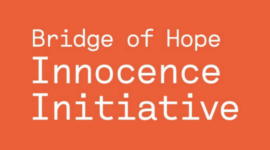Why a Criminal Case Review Commission Is No Panacea

The recent pardon of Kathleen Folbigg has reignited discussions regarding the appropriate mechanisms to review and remedy wrongful convictions in Australia.
One reform put forward by lawyers, academics and former High Court Justice Michael Kirby is an Australian Criminal Case Review Commission (CCRC), which is a dedicated statutory body working to investigate claims of wrongful conviction.
Recently, the Bridge of Hope Innocence Initiative, an organisation run out RMIT University (for which I’m a teacher and consultant) released a position paper expressing scepticism that an Australian CCRC would work effectively as a remedy for most wrongful convictions.
Here’s why we are sceptical of a CCRC approach and why we think other reforms should be prioritised as an alternative.
What’s wrong with the current system?
The options available to a wrongfully convicted person in Australia are extremely limited.
Whilst all individuals convicted of a crime are entitled to appeal their conviction, this is unlikely to be successful unless there were major flaws with the original trial.
Successful appeals usually involve unusual circumstances such as an error in directions given by a judge, the admission of evidence which shouldn’t have been allowed, incompetent or careless legal representation or other circumstances where the conviction is clearly unreasonable or cannot be supported by evidence.
Generally, most convicted individuals get one shot at an appeal. However, in some jurisdictions (including South Australia, Tasmania, Victoria and Western Australia) a second right of appeal is available in circumstances where “fresh” and “compelling” evidence is available.
Second right of appeal rights vary across jurisdictions in scope and wording, but generally require some “fresh” evidence that was not available at trial, that has subsequently been uncovered. The recently enacted Western Australian law has a slight advantage in that it also includes evidence that was not tendered due to incompetent or negligent defence lawyers within their definition of “fresh”.
However, as the Director of BOHII Dr Michele Ruyters, explained in a recent webinar the majority of wrongful conviction cases we assess do not have any “fresh” evidence upon which to mount an appeal. From our experience, reviewing over 160 applications of wrongful convictions, the overwhelming majority of cases rely on circumstantial evidence for which there is little chance of new evidence coming to light.
Most of our cases involve overzealous investigations and prosecutions in which motive to commit the offence is the main evidence put to the jury. We commonly find that defence lawyers are at a clear disadvantage at trial due to poor disclosure practices by police and prosecutors, limited resources as well as limited information leading to poor forensic decision making (such as the failure to identify and call key witnesses). These errors are not always the result of incompetency or negligence, but more systemic issues impacting the capacity for lawyers to mount a satisfactory defence.
Many of our applicants find it difficult to clearly articulate their case for innocence or to assist in identifying fresh evidence which helps their case. This is often because they are vulnerable, either because of cognitive or mental health impairment, cultural or linguistic diversity, Aboriginal and Torres Strait Islander status or other key markers of disadvantage.
In the absence of fresh evidence (or the option of a second right of appeal at all), the vast majority of individuals who apply to BOHII for review of their wrongful conviction have very little options.
One final option for some is to seek a pejorative of mercy or ‘pardon’ by the Governor to overturn their conviction. However, this power is rarely exercised and is unlikely to be used in cases involving stigmatised claimants, particularly those with a lengthy criminal history.
As a result, the vast majority of people wrongfully convicted in Australia have few options for post-conviction review.
How would an Australian CCRC work?
Given the limited options available to remedy wrongful convictions in Australia, many individuals are calling for the implementation of a statutory CCRC.
The UK has had a CCRC since 1997, entrusted with re-examining criminal cases where people maintain they’ve been wrongly convicted or sentenced after they’ve exhausted all avenues for appeal.
The UKCCRC has 12 commissioners that refer decisions (in three-member panels) to the Court of Appeal if they believe a case has merit and there is ‘real possibility’ the conviction will be quashed.
Whilst the UKCCRC has extensive powers to obtain information from public bodies and to conduct an investigation, most of the work of CCRC panels involves “desk assessments” – involving a review of case papers rather than comprehensive investigations. This is a consequence of frequent funding cuts. It has been well documented that desk assessments significantly disadvantage applicants from vulnerable backgrounds, including those with low literacy levels, cognitive or mental health impairments, cultural and linguistic diversity and/or other markers of vulnerability and disadvantage.
The UKCCRC refers very few applications to the courts (less than three per cent of the approximately 1400 applications that it reviews per year). As Professor Carrier Leonetti has noted, almost none of the cases that the UKCCRC has referred to the Court of Appeal have involved actual innocence. Instead, referrals have largely involved claims of procedural injustice, diminished responsibility, police misconduct, and witness reliability.
Whilst Australia could theoretically adopt any kind of CCRC model it wishes, it seems likely that governments would adopt many of the key features of the UKCCRC. In particular, it seems likely that an Australian CCRC would refer matters to the Court of Appeal following an investigation, rather than decide on a case itself – this is because empowering a statutory body to overturn convictions would violate principles of judicial independence and create an inequitable post-conviction review process with individuals pursuing the appeals route needing to satisfy a much higher threshold . It also appears likely that referrals will be based on either first or second right of appeal criteria to determine whether a conviction should be overturned.
Would an Australian CCRC address most cases of wrongful conviction?
Whilst an Australian CCRC may at first appear to be a promising reform (particularly in jurisdictions where no second right of appeal exists), it will fail, in our view, to address the many hurdles faced by people currently seeking to overturn their wrongful convictions.
As noted above, an Australian CCRC is likely to be tied to state first and second appeal criteria. This means that the statutory body will simply make decisions based on the restricted criteria that already exist in most jurisdictions, which do not assist the vast majority of wrongful conviction claimants seen by BOHII (and, one assumes, innocence initiatives and projects throughout Australia).
If Australia were to adopt a UKCCRC this would also likely result in a threshold review process relying on ‘desk assessments’ of the merits of applications for assistance. The experience of CCRCs overseas indicates they are incredibly resource limited, unable to undertake the extensive investigations required to determine cases of factual innocence. Given the persistent economic rationalism influencing Australia public administration it seems highly likely that funding and resourcing for an Australian CCRC will be far below what is required to investigate the, often complex, cases which characterise wrongful conviction claims.
As an Australian CCRC is likely to reproduce the issues that already exist for wrongful conviction claimants, BOHII is of the view that the innocence movement in Australia should prioritise alternative reforms.
What are the alternatives?
Rather than implementing an Australian CCRC now, it is BOHII’s position that a number of other reforms and initiatives should be prioritised, including:
- Introducing second right of appeal legislation in jurisdictions (including NSW) that don’t currently have avenues for second appeal.
- Expanding the definition of ‘fresh’ evidence in jurisdictions where a second right of appeal is available to that found in s 35D Criminal Appeals ACT 2004 (WA) and establishing a new criteria for ‘new’ evidence appeal similar to s 35H(4) Criminal Appeals ACT 2004 (WA).
- Addressing inadequacies in police and prosecutorial disclosure across Australia through random, independent auditing of disclosure certificates and a requirement for complete and itemised details of disclosed material.
- Implementing a mandatory, centralised digital storage of case files to assist in post-conviction review.
- Undertaking a national review of the reliability of forensic evidence in Australia.
- Introducing government funding of innocence projects to undertake the investigative work required to identity wrongful convictions.
- Providing addition funding to police to engage appropriate experts in the transcription of covert recordings and other material which may be of use by the defence.
Finally, there is a desperate need for further research across Australia to identify the risk factors for miscarriages of justice and the best avenues for post-conviction. Rather than implementing an overseas model for post-conviction review, Australia should design an intervention tailored to the needs of claimants at home.






